
Loud and Clear: Best Helmet Speakers for Canada
left for contents
Envision thundering down the Trans-Canada Highway on your iron steed, your favourite artist echoing in your ears.
Yet before switching to the CMVSS 218–approved Cardo JBL 45 mm kit, a pal’s speakers were cranked to max only to deliver static wails lost in howling wind, rumbling big rigs and a biting Northern chill. Is this a playlist or a modem dialing in?
That cacophony rang out from Vancouver to Banff and it was brutal.

Source
I now use the Cardo JBL 45 mm speaker set on every ride, plugged into my Packtalk Edge. I’m upgrading to the Packtalk Pro soon, since it includes the legendary 45 mm speakers in the box as well as auto on/off and crash detection.
The investment in that new speaker set was worth every cent on frosty cross-country runs. The leap from cheap in-ears to beefy woofers is like trading a kazoo for a live orchestra inside your helmet.
But sizing that up on a product listing? Nearly impossible.
This compilation is born of hours battling highway roar, sub-zero wind-chill and roaring transport trucks, with static wails ringing in your earmuffs. I’ve personally subjected every model here to those conditions, plus a few that flopped.
After a round of feedback from riders coast to coast over Tim Hortons double-doubles, we’ve identified five setups that deliver clear, powerful sound across any terrain. Here’s how they stack up:
This top-tier collaboration with audio giant JBL brings riders booming bass and crystal-clear mids without any trace of tinniness, even at highway speeds across Canada. | With the largest 47 mm drivers available, these speakers deliver stadium-level volume and deep, resonant bass that easily cuts through wind and engine noise, whether you’re cruising the Trans‑Canada or weaving through city streets. | A solid step up from the standard 30 mm speakers bundled with many budget intercoms, these 40 mm units offer impressive sound quality at a price that works for most riders. | Designed as a direct upgrade for Sena systems, this HD kit adds more depth to the bass and sharp midrange clarity, making every ride sound better without breaking the bank. |
|
|
|
|
This top-tier collaboration with audio giant JBL brings riders booming bass and crystal-clear mids without any trace of tinniness, even at highway speeds across Canada.
- Clear, detailed audio even at 140 km/h and beyond
- Balanced sound quality, even at maximum volume
- Lets you hear intercom, music, and GPS directions all at once without distortion
With the largest 47 mm drivers available, these speakers deliver stadium-level volume and deep, resonant bass that easily cuts through wind and engine noise, whether you’re cruising the Trans‑Canada or weaving through city streets.
- Huge 47 mm drivers for deep, hard‑hitting bass
- Die‑cast aluminium housing built for durability
- Long cable for flexible routing in most helmets
- Straightforward plug‑and‑play wired setup, no charging needed
A solid step up from the standard 30 mm speakers bundled with many budget intercoms, these 40 mm units offer impressive sound quality at a price that works for most riders.
- Affordable price point
- Good maximum volume for everyday rides
Designed as a direct upgrade for Sena systems, this HD kit adds more depth to the bass and sharp midrange clarity, making every ride sound better without breaking the bank.
- Upgraded 40 mm drivers for fuller bass and detailed vocals
- Low‑profile design fits most full‑face and modular helmets
- Simple plug‑and‑play setup with adhesive mounting pads
- Built to handle regular wear, bumps, and moisture
I’ve been using the Cardo + JBL 45 mm helmet speakers for over three years, and they’re still the best value I’ve found. They outperform speakers that cost nearly twice as much and work with any motorcycle intercom that has a 3.5 mm headphone jack. I first tested them with a Cardo Spirit, and they delivered flawlessly every time.
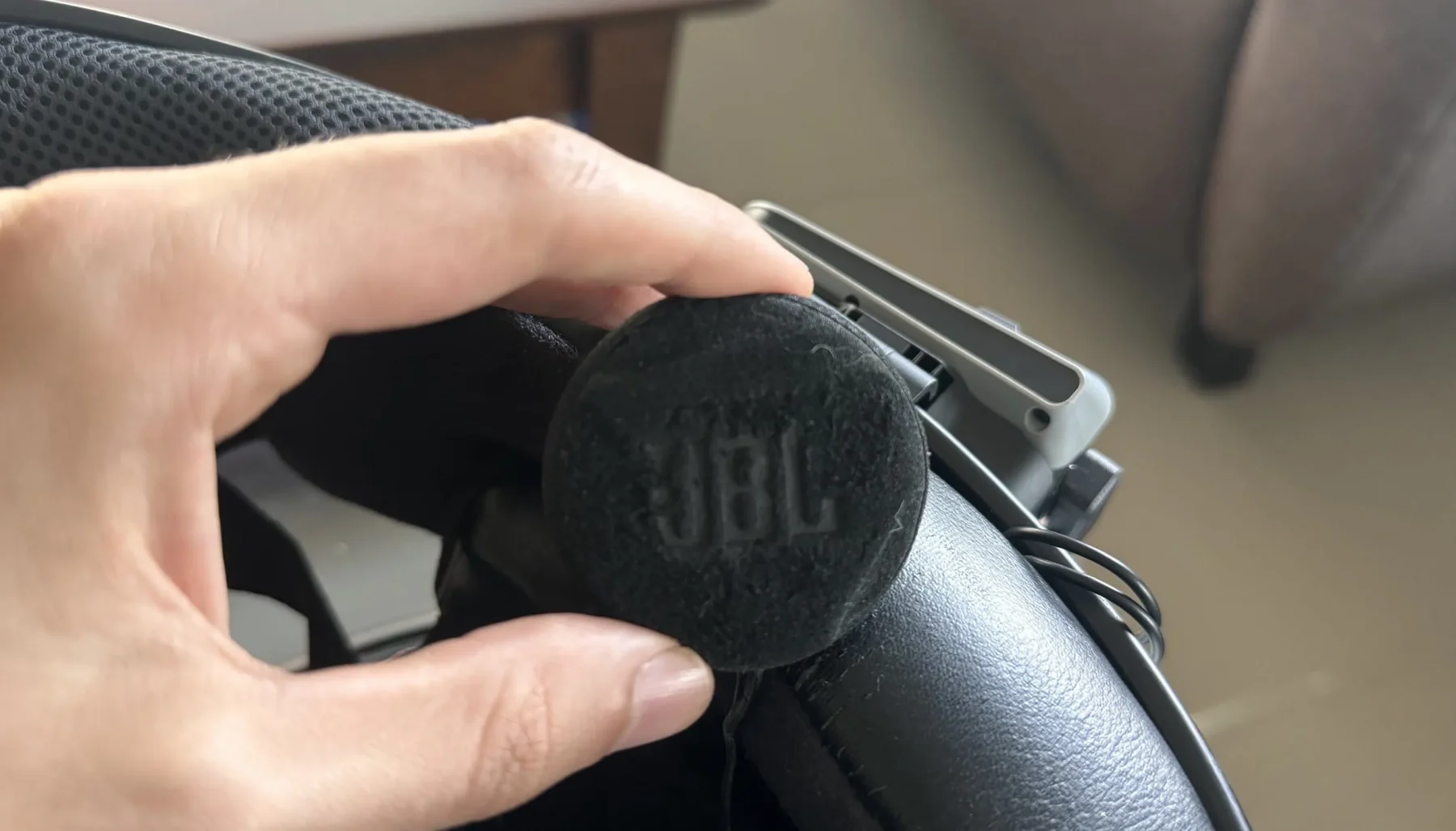
Since the Cardo control units are waterproof, you can even pair a Cardo Spirit with the 45 mm JBL speakers for winter sports like skiing, snowboarding, or snowmobiling. Just keep in mind that the speakers themselves aren’t water-sealed, so they need a bit of care in wet conditions.
For a setup that’s fully waterproof and built to handle the snow, the Syphon SoundPro is worth a look. Its speakers are completely sealed, the cables are reinforced for durability, and the system can be moved easily between different helmets. It’s an ideal option for winter activities, though it’s not as refined for motorcycling as the Cardo kit.
The Best Bluetooth Speakers for Your Motorcycle Helmet
Add any of these speaker kits to your helmet and stream your favourite music, podcasts, or navigation prompts straight from your phone using a Bluetooth communicator like Sena or Cardo. Just make sure your helmet has good noise insulation, or wind and engine noise, especially on long Canadian highway stretches, will overpower even the loudest speakers.
JBL and Cardo 45mm Motorcycle Audio Kit
This one is my personal favourite. My everyday go-to. The ultimate collaboration between JBL and Cardo.
JBL is a familiar name to most Canadians. Their portable speakers, like the Charge 6, are a common sight at campsites, lakesides, and parks across the country, pumping out sound far bigger than their size suggests.
Cardo, the specialists in Bluetooth motorcycle intercoms, teamed up with JBL to create helmet speakers that deliver rich, clear sound in just about any riding condition, from rain on the coast to heavy winds on the prairies. Their flagship product is the 45 mm Audio Set.
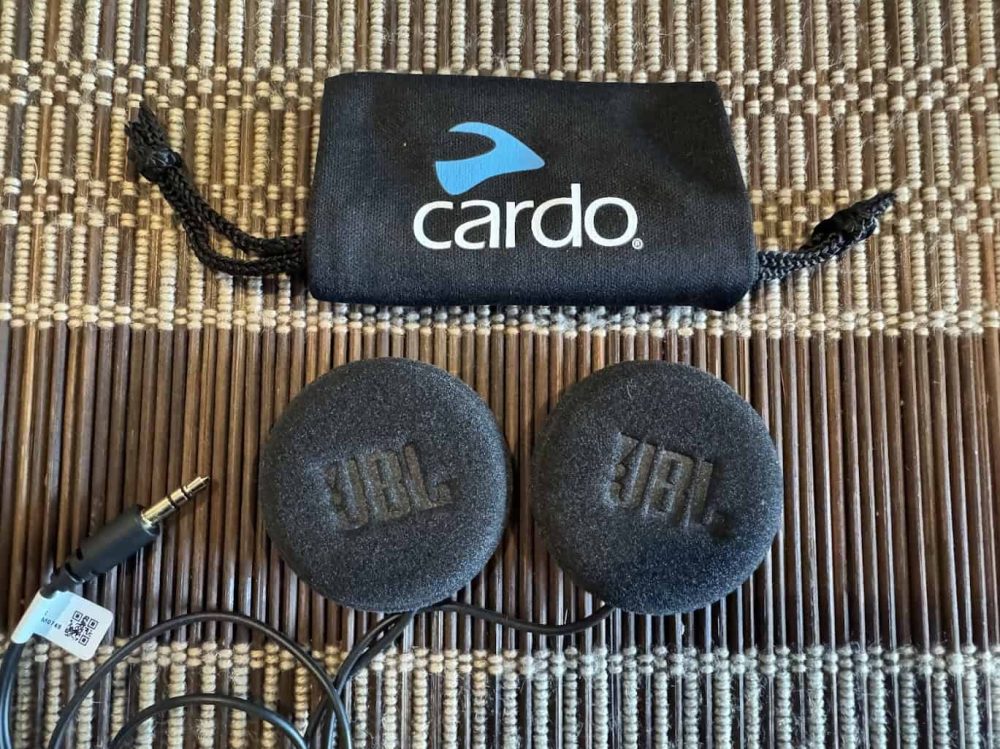
A riding buddy’s Cardo JBL 45 mm speakers have been through it all, from blasting across the Cabot Trail in Nova Scotia to climbing through the Rockies. They’re not flashy to look at, but the sound is something else — like watching a movie in Dolby Atmos at the cinema. Even in gusty winds, they deliver GPS directions, phone calls, podcasts, or heavy riffs with clarity and reliability, whether you ride with a full-face or an open-face helmet.
Those speakers have been tested in:
- High winds along the Trans-Canada Highway near Moose Jaw
- Stop-and-go traffic in downtown Toronto
- Driving rain in British Columbia aboard an adventure bike
- Flat-out stretches on a sportbike along the Sea-to-Sky Highway
At a sensible volume, this kit turns your helmet into your own private listening space. Every note comes through with crisp highs, full bass, and clear mids, so there is no need to constantly adjust the volume, skip tracks, or switch the sound off in frustration.
Cardo’s 45 mm set truly delivers. Can you still hear what’s happening around you? Absolutely. Traffic noise and the sound of your exhaust sit in the background, letting your music or calls take priority without cutting you off from the road.
If this setup doesn’t meet your expectations, nothing will. Get a set, shut your laptop, and get back on the bike. All good until the next service.
This top-tier JBL collaboration delivers crisp highs and deep, punchy bass, with more than enough volume to rise above wind and road noise, even on Canada’s open highways.
- Clear, detailed audio even at 140 km/h and beyond
- Balanced sound quality, even at maximum volume
- Lets you hear intercom, music, and GPS directions all at once without distortion
IASUS XSound 4 Helmet Speakers
At 125 dB at maximum output, these are the loudest motorcycle helmet speakers we’ve tested.
Does that make them the best? Not necessarily.
Anything over 100 dB will do more harm to your hearing than good, even at 190 km/h on a closed course. For context, 125 dB is about as loud as having an air horn blasting beside your ear.
If you wear earplugs, though, this level of volume ensures you can still hear your music, podcasts, phone calls, and intercom communications clearly in almost any riding condition. That’s a big advantage for those long stretches on the Trans‑Canada or windy mountain passes.
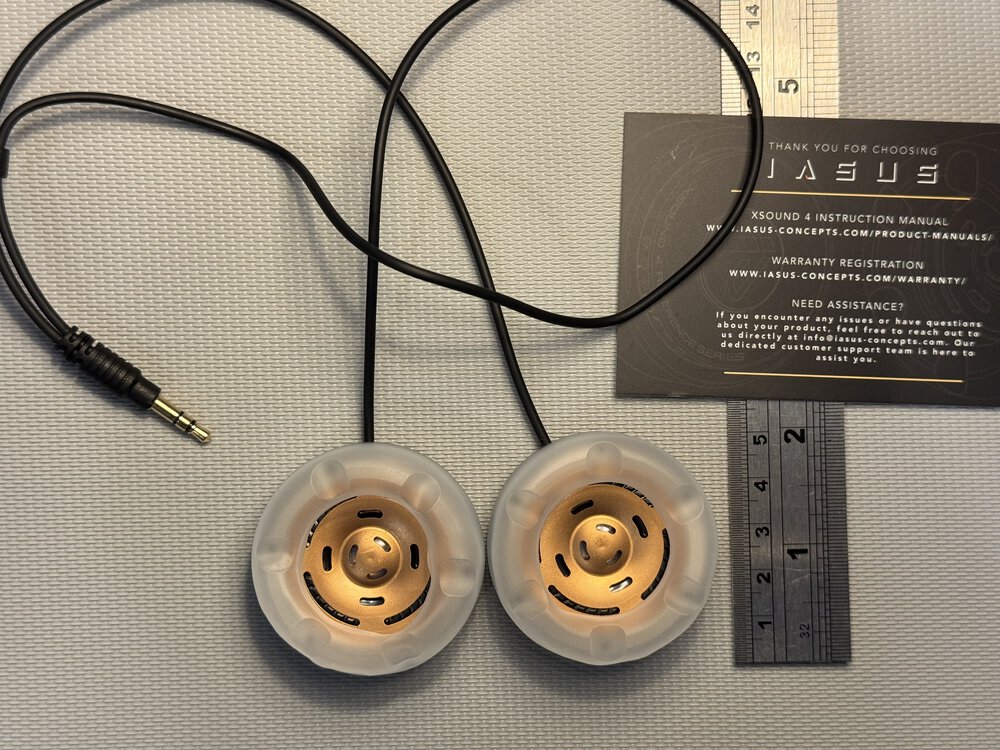
Another benefit is their design. These speakers are just 9.9 mm thick, which is incredibly slim for 45 mm drivers and even thinner than the Cardo JBL kit. Why does that matter? It means they won’t rub against your ears, so there’s no need to trim or modify your expensive helmet padding just to make them fit comfortably.
Each speaker is also fitted with “acoustic flex” cushioning, which improves sound isolation and boosts comfort. The cushion sits right up next to your ear, blocking out unwanted noise and channelling every note and word directly to you.
On top of that, the Kevlar‑reinforced extension cord prevents the fraying and wear issues that plague many other sets, like the UClear models. Kevlar is strong enough to stop bullets, so it can definitely handle the abuse of Canadian riding conditions.
You can use these as an upgrade to your current Bluetooth unit or connect them directly to your phone with the supplied extension lead.
These 45 mm drivers deliver strong, detailed sound, but what sets this set apart is its ear‑cupping design. The speakers are shaped to sit snugly around your ears, which improves sound isolation and clarity, even on long Canadian highway rides or through gusty crosswinds.
- Ear‑cupping design for better isolation and immersive audio
- Powerful output that can cut through wind and engine noise
- Comes with an extension cord for easy setup with your phone or Bluetooth unit
UClear Digital HDX 47 mm Helmet Speakers
With the largest 47 mm drivers you can get, these speakers deliver heavy bass and big, room‑filling volume that easily cuts through wind and engine noise on Canadian highways or backroads.
But sheer size doesn’t tell the whole story. The powerful low end can overpower the mids, which sometimes makes vocals and GPS prompts harder to hear, especially when riding at lower speeds.
That said, they do get several things right. The construction feels tough, the die‑cast housings can handle knocks and scrapes, and the long cable lets you plug directly into your phone without fiddling with Bluetooth pairing.
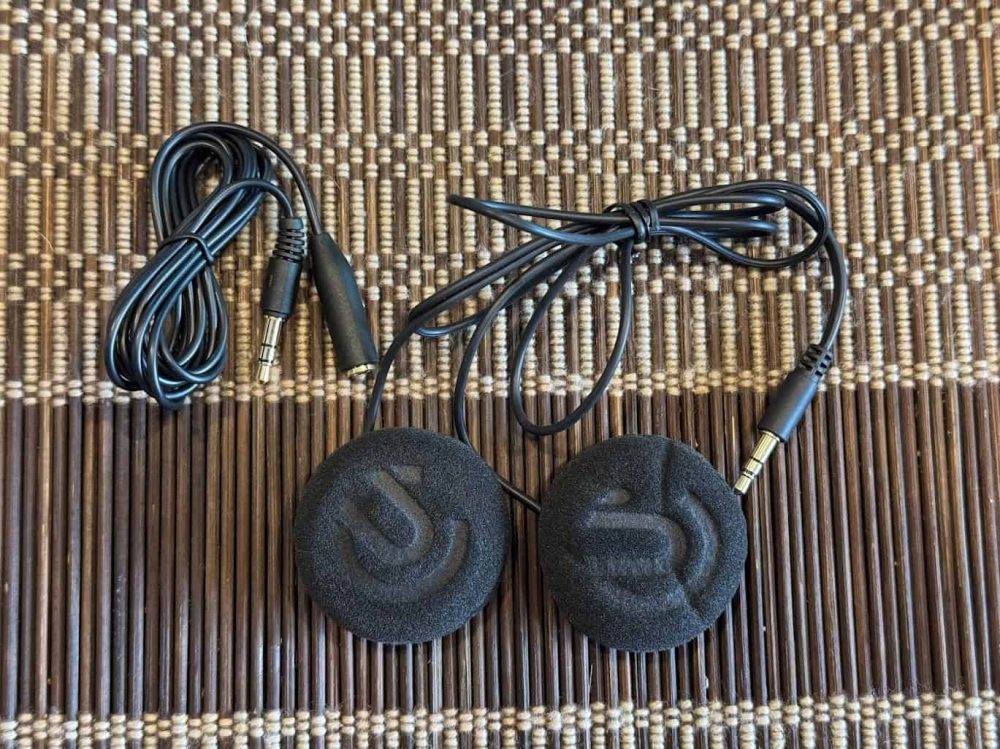
They also come in at a lower price point than the Cardo JBL 45 mm kit and don’t require battery charging. The trade‑off is that you lose the freedom of wireless, and you may need to replace the cable now and then with heavy use.
If you’re after chest‑thumping bass and don’t mind sticking with a wired setup, the HDX 47 mm speakers will scratch that itch for pure volume. Riders who want a more balanced, Bluetooth‑enabled system might prefer a different option.
47 mm drivers deliver deep bass and powerful volume, while the standout feature of the UClear Digital HDX 47 is its precision‑engineered acoustics and sturdy die‑cast housings that lock firmly into your helmet, boosting sound performance and durability.
- Huge 47 mm drivers for deep, hard‑hitting bass
- Die‑cast aluminium housing built for durability
- Long cable for flexible routing in most helmets
- Straightforward plug‑and‑play wired setup, no charging needed
Sena SC-A0325 Hd Speakers
With their 40 mm drivers capable of hitting up to 122 dB (louder than a pneumatic drill) the Sena SC‑A0325 speakers easily cut through wind and engine noise, whether you’re cruising city streets or covering long stretches of Canadian highway.
The limitation is compatibility. These speakers don’t include standalone Bluetooth functionality, so they only work with Sena intercom units. If you use another brand, these won’t integrate with your setup.
On the positive side, they produce well‑balanced bass and clear mids, and their slim 10 mm profile means they fit comfortably in most full‑face and modular helmets without putting pressure on your ears.

Source
Some riders note that the cable sheath can stiffen over time, which can lead to intermittent audio dropouts. The included adhesive pads may also need replacing after a few months of use.
You can control volume and skip tracks through your Sena remote, but this wired setup keeps you tied to your intercom unit and comes with the occasional need to maintain cables and pads.
If you’re already using a Sena communicator and want consistent audio clarity with deeper bass and sharper mids, the SC‑A0325 delivers. Just be prepared for a bit of upkeep over time.
Specifically designed for Sena intercoms, this speaker kit enhances bass and midrange clarity without adding bulk. Its tuned diaphragms and low‑profile fit keep your music, calls, and intercom audio crisp, even when wind and engine noise rise.
- Upgraded 40 mm drivers for fuller bass and detailed vocals
- Low‑profile design fits most full‑face and modular helmets
- Simple plug‑and‑play setup with adhesive mounting pads
- Built to handle regular wear, bumps, and moisture
IASUS XSound 2.1R Helmet Speakers
The IASUS XSound 2.1 speakers deliver solid performance at a price that won’t break the bank, making them a dependable option for Canadian riders looking to upgrade their helmet audio without spending top dollar.
These 40 mm drivers offer respectable sound quality, with plenty of bass and clear mids and highs. Riders we’ve spoken to (and nearly a thousand reviewers on Amazon) agree that while they don’t match the depth and clarity of the Cardo + JBL kit, they get the job done for most rides.
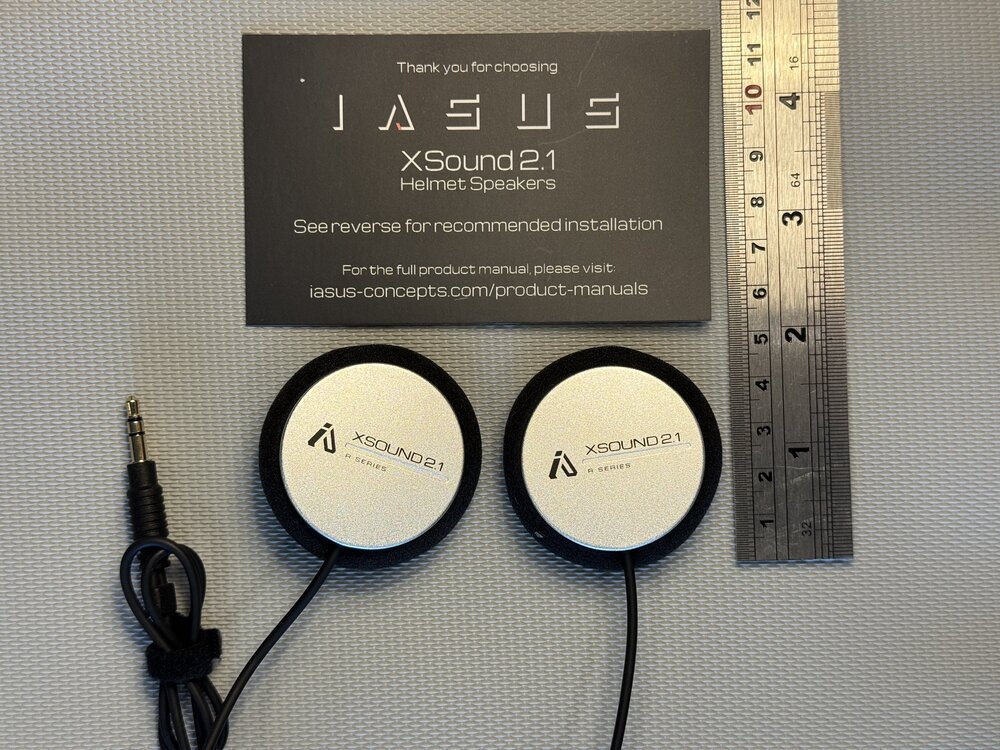
Each set comes with a one‑metre extension cable, so you can install them straight out of the box and connect to your phone or intercom without fuss. There’s no complicated Bluetooth pairing required unless you want to link up with other riders.
When compared to UClear’s speakers, the XSound 2.1 provides a more balanced sound across bass, mids, and treble, though they max out at 98 dB — roughly the volume of a car horn a few metres away. For most city and country rides, that’s enough, but riders who spend time on long, windy stretches or at highway speeds may find themselves wanting the extra punch found in the Cardo + JBL 45 mm kit or the more premium XSound 4.
The upside? The XS2.1 costs about half as much as the Cardo + JBL kit, making it a good choice if your helmet seals well and your riding conditions aren’t excessively loud.
A solid step up from the standard 30 mm speakers bundled with many budget intercoms, these 40 mm units offer impressive sound quality at a price that works for most riders.
- Affordable price point
- Good maximum volume for everyday rides
- Lacks the depth and clarity of higher‑end options
Alternatives to Drop-in Speakers for Your Motorcycle Helmet
Even the best helmet speaker kits have their downsides.
So what’s the issue with my Cardo + JBL 45 mm setup?
They’re a hassle to move between helmets.
The solution?
Earbuds.
A good pair of earbuds will let you take your music and podcasts anywhere — on your bike, during flights, or just when you need to block out the noise at home.
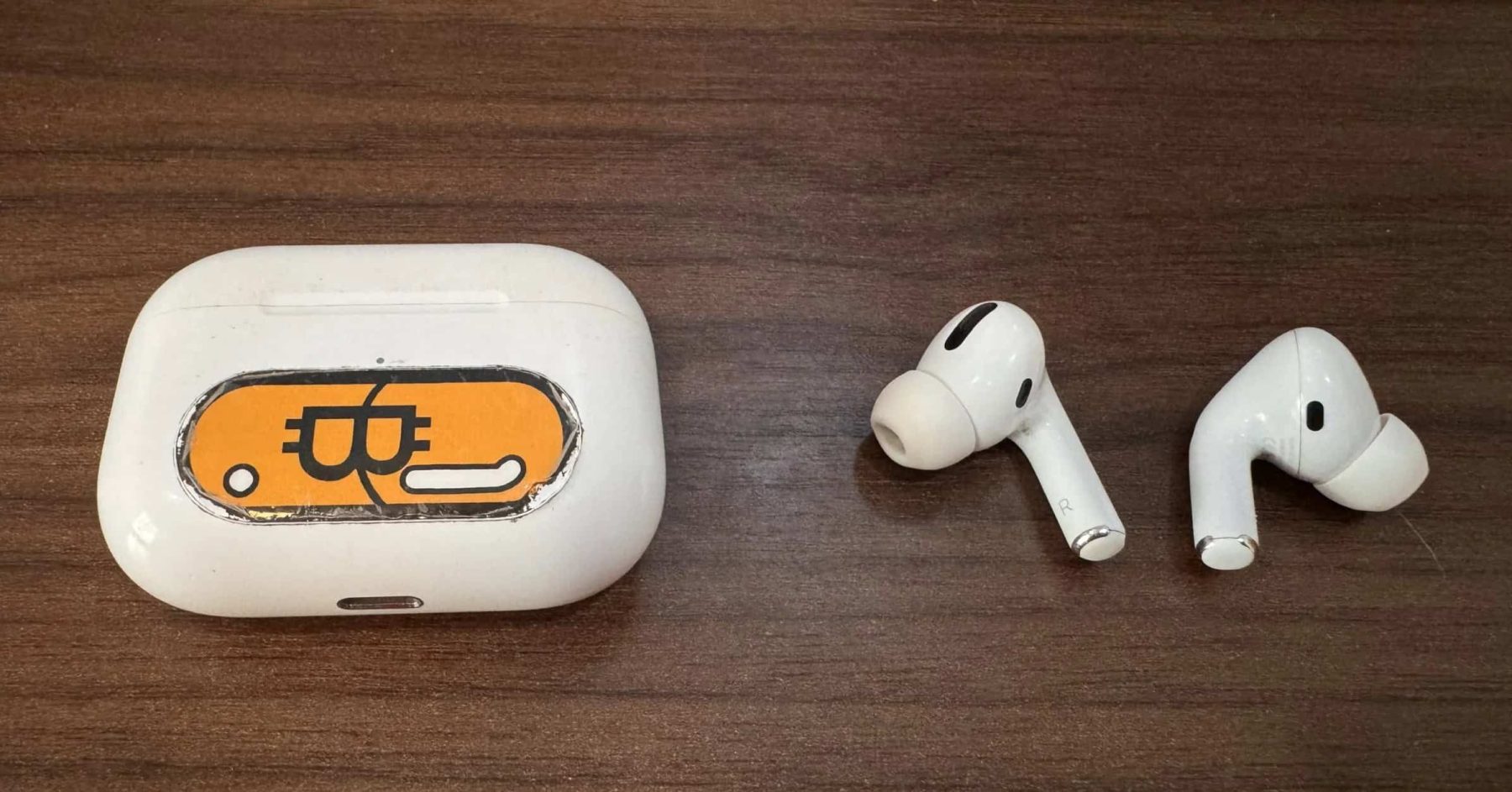
But there are trade‑offs: fit, slipping out, and no way to connect to a Bluetooth intercom system.
Earbuds can be uncomfortable under a helmet, pressing into your ear canal and causing discomfort over time. That irritation can turn into frustration, which can distract you on the road when you need full focus.
They also have a habit of popping out mid‑ride, and when they’re gone, they’re usually gone for good. Replacing them isn’t cheap, either.
If you’re okay with those risks, here are a few options to consider.
AirPods
Whatever you think of Apple, AirPods are about as close as it gets to the perfect all‑around audio companion for Canadian riders.
• Clean, detailed sound without needing deafening volume
• No wires to snag on your jacket, zippers, or helmet straps
• Drop them in and they instantly connect to your Apple devices
• Slim and compact enough to sit comfortably even in a snug helmet
• All for roughly the same price as a mid‑range Bluetooth communicator and speakers, with the bonus of using them off the bike as well
Not bad at all.

Source
The design isn’t for everyone, but the bigger issue shows up once you’re on the road. With AirPods in your helmet, you’re stuck with your playlist — there’s no quick way to change tracks or adjust the volume without pulling out your phone.
Battery life is another consideration. Depending on their age, you’ll get about four to six hours before they need a recharge. That doesn’t come close to the virtually unlimited playback you’ll get from wired helmet speakers, or the 13‑plus hours from a Bluetooth communicator like the Cardo Packtalk Edge, which you can charge while riding. Plus, proper communicator systems give you the option for rider‑to‑rider intercom, which AirPods can’t match.
That said, if you don’t mind stopping to pop them back in their charging case, they’ll easily get you through a day of riding.
For pure sound quality, they outperform nearly every helmet speaker kit, and because they double as everyday earbuds, they’re a practical choice for plenty of riders.
Premium wireless earbuds with personalized audio, active noise cancellation, and hearing‑assist features.
- Over 24 hours of battery life with the case
- Active noise cancellation for clear sound in loud environments
- USB‑C and MagSafe charging options
- Works with Apple and Android devices
- Pricey for riders who only use them occasionally
Beats Flex
As much as I like AirPods, I wouldn’t have lost that left one last summer if I’d been using my Beats Flex.
They fix the disappearing earbud problem by connecting the two buds with a cable, like the old-school wired in‑ear sets.
I prefer using these on the bike because the in‑line controls sit right by your neck. Want to skip a track? Easy. Phone call coming in? Answer without digging through your jacket for your phone.
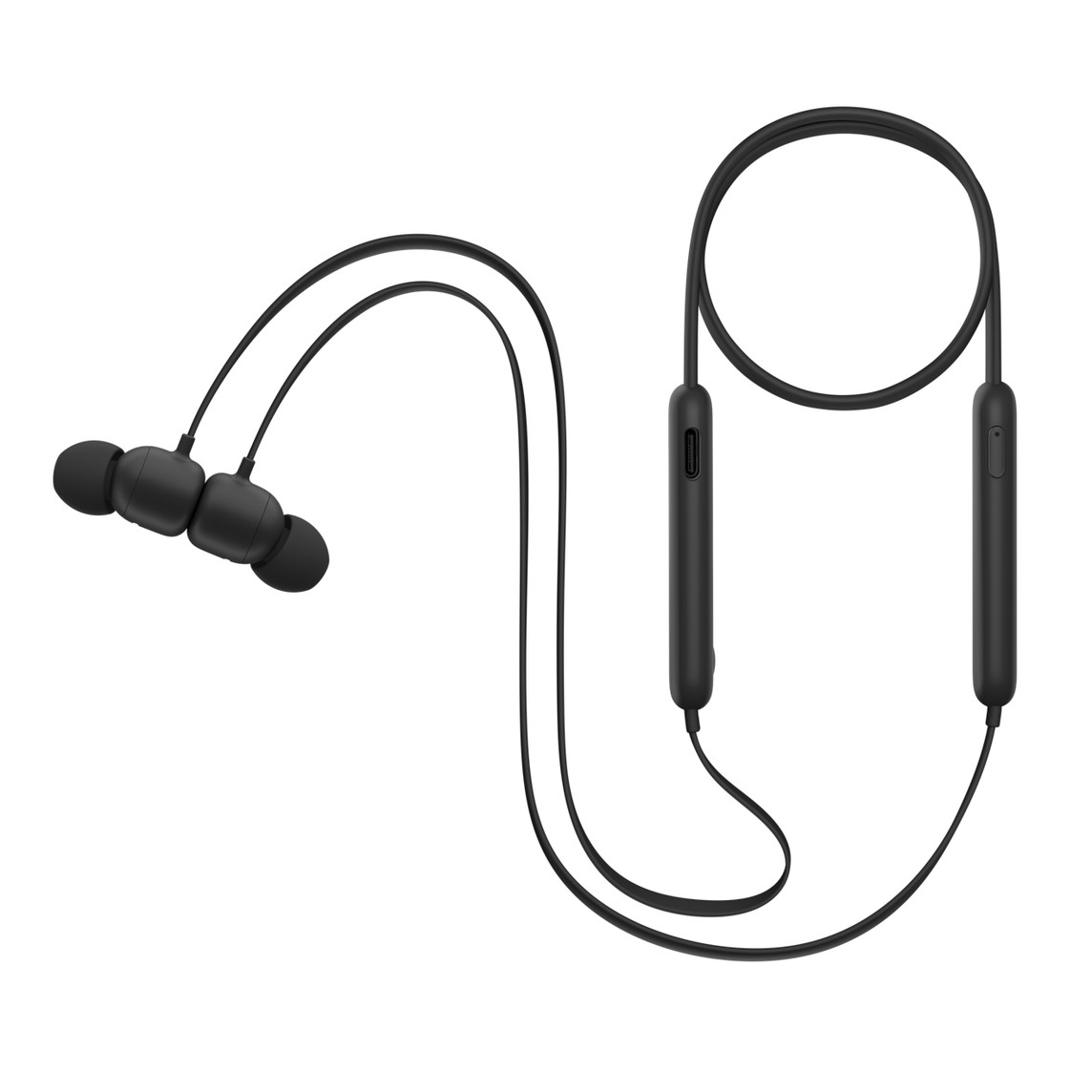
Source
They don’t offer active noise cancelling, but they make up for it with their trademark bass, something Beats is known for.
Battery life is solid, too, lasting a full day on the road. Independent tests have clocked over 10 hours from a single charge, so they’re dependable for long rides.
If you’re trying to keep your costs in check, the Beats Flex also come in far cheaper than AirPods, while still delivering similar sound quality.
For riders who tend to misplace earbuds or can’t stand when their music shuffle queues up that one album they didn’t mean to like, the Beats Flex are a smart, budget‑friendly choice.
The Beats Flex Wireless Earbuds offer seamless connectivity, delivering up to 12 hours of playback with the Apple W1 chip, magnetic earbuds, and a comfortable neckband design.
- 12‑hour battery life
- Built‑in microphone for calls
- Neckband wire so they won’t get lost
- The cable can feel cumbersome for some riders
Testing Criteria
This guide is based on first impressions from each speaker set, with full hands‑on testing underway using the approach and standards below.
Each set is evaluated across several key factors:
• Overall sound quality
• Volume and clarity across the full frequency range
• Comfort during both short trips and long hauls
• Ease of installation in different helmet types
To keep things consistent, every test uses the same headform and helmet, my Shoei RF-SR. Each speaker kit is paired with a Cardo Packtalk Edge communicator connected to an iPhone 15 Pro, streaming music and podcasts via Spotify.
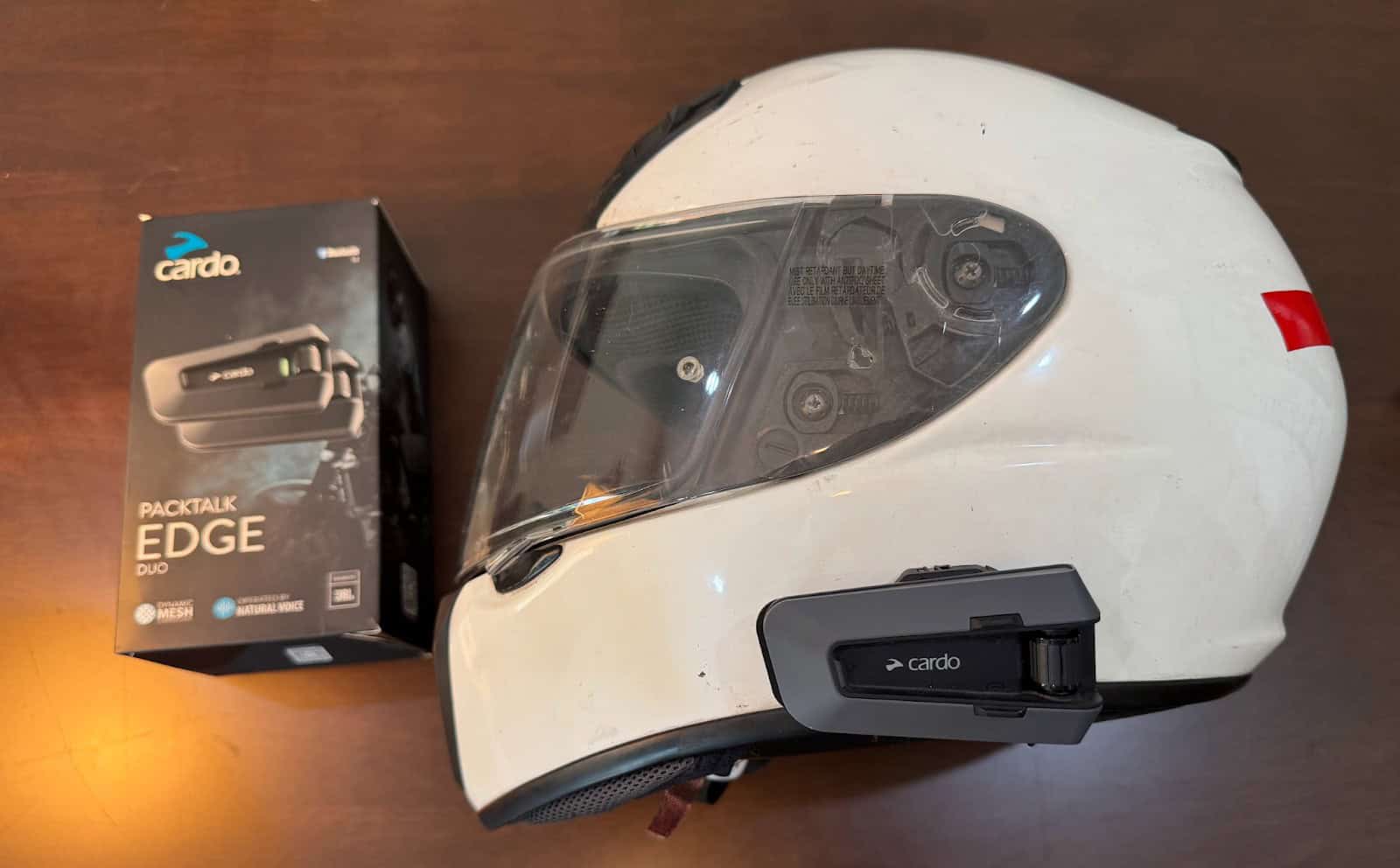
The testing playlist spans multiple genres to really push each set: rock and country for vocals and instrument balance, electronic for crisp highs, classical for dynamic range, hip hop for deep bass, and pop for general mix. Podcasts like How I Built This are also used to judge spoken‑word clarity.
Baseline testing is done in a quiet, controlled office space, while on‑road testing happens in different conditions: heavy downtown traffic (in Bangkok), open rural routes, and fast‑moving divided highways at a range of speeds, with the helmet visor both open and closed. Bikes used for the tests include a Honda ADV160 and a Yamaha Tracer 9 GT.
FAQs
What are the best helmet speakers for music?
For riders who put music first, the top choice is the Cardo 45 mm JBL kit. These speakers deliver powerful, room‑filling sound, and their 45 mm drivers offer about 27% more surface area than the standard 40 mm speakers you’ll find in most other kits. That extra size translates to a broader dynamic range, from deep, rich bass to bright, detailed highs.
Whether you’re listening to blues ballads on a quiet stretch of the Trans‑Canada or blasting pop hits through city traffic, the Cardo 45 mm JBL kit keeps every note sharp, clear, and easy to hear above wind and engine noise.
This top-tier JBL collaboration delivers crisp highs and deep, punchy bass, with more than enough volume to rise above wind and road noise, even on Canada’s open highways.
- Clear, detailed audio even at 140 km/h and beyond
- Balanced sound quality, even at maximum volume
- Lets you hear intercom, music, and GPS directions all at once without distortion
Are the Syphon SoundPro Ultra Thin speakers any good?
The Syphon SoundPro Ultra Thin speakers get mixed reviews among riders. Some even call them “ScamPro,” which might be a stretch, but there are some valid concerns.
These are built specifically for riders who just want music in their helmet, not full‑on communication features. They don’t support intercom, and the built‑in microphone (tucked into one speaker) is nearly useless for phone calls.
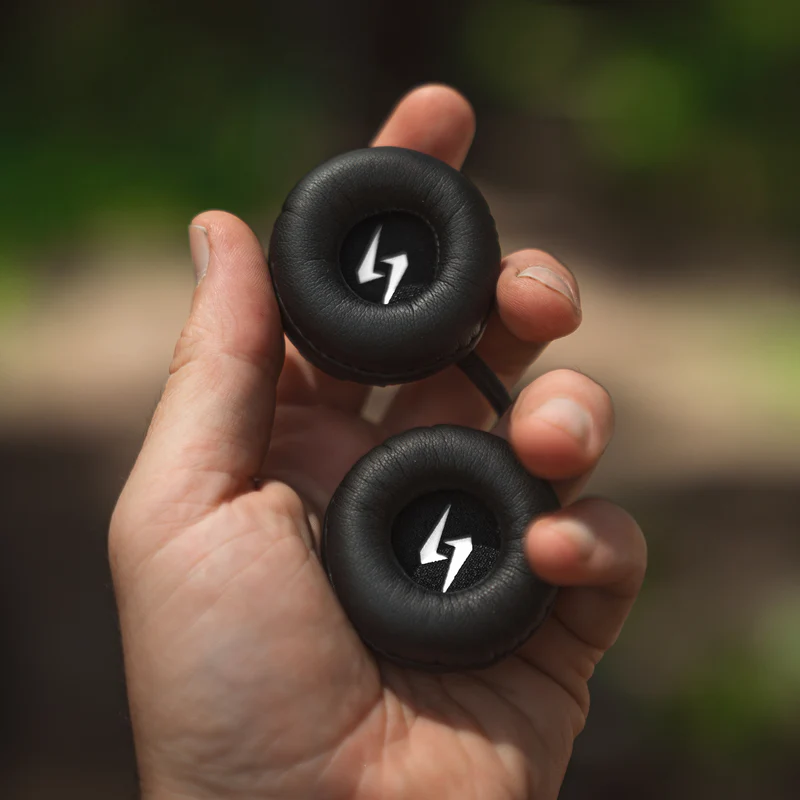
Source
On the plus side, the whole setup is waterproof, the speakers are less than 10 mm thick so they won’t rub or cause pressure in a snug helmet, and the external control wheel makes it simple to change tracks or answer calls without fumbling with your phone.
A fellow rider recently tried a pair and said the audio quality stood up well compared to his iASUS XSound 4 and Cardo JBL 45 mm kits, with plenty of clarity even in heavy crosswinds or at highway speeds.
The catch? The price. At roughly $200 CAD, they cost more than a Cardo Spirit bundled with the 45 mm JBL speakers, and unlike Cardo, they won’t link with other Bluetooth headsets for intercom or support voice assistant functions.
If you’re using them for skiing, snowboarding, or other outdoor sports, they make sense thanks to their durability and waterproofing. But for most Canadian riders, a Cardo unit still offers better value and versatility.
What are the loudest motorcycle helmet speakers?
The Cardo 45 mm JBL speakers lead the pack for sheer volume, capable of reaching roughly 120 dB, about as loud as a rock concert. But it’s not just about loudness. These JBL‑tuned drivers also shine in clarity, offering a broader frequency range than most 40 mm speakers, from deep, resonant lows to sharp mids and highs.
In testing, a year‑old set hooked up to a Packtalk Custom still pumped out over 90 dB while blasting 90s country at full tilt, which is more than enough for most riding conditions. For typical rides, half volume is plenty, landing around 90 dB once you factor in wind and engine noise (without earplugs).
It’s worth noting that long exposure to sounds over 100 dB can damage your hearing, so keeping volume in check is important. Even after months of daily use, these speakers keep delivering the same power and clean sound as when they were brand new.
This top-tier JBL collaboration delivers crisp highs and deep, punchy bass, with more than enough volume to rise above wind and road noise, even on Canada’s open highways.
- Clear, detailed audio even at 140 km/h and beyond
- Balanced sound quality, even at maximum volume
- Lets you hear intercom, music, and GPS directions all at once without distortion
Are motorcycle helmet speakers legal in Canada?
Across most of Canada, helmet speakers are generally legal and are treated much like speakers mounted on your bike. There aren’t specific laws banning them, as long as they don’t completely block out surrounding sounds like traffic, sirens, or horns.
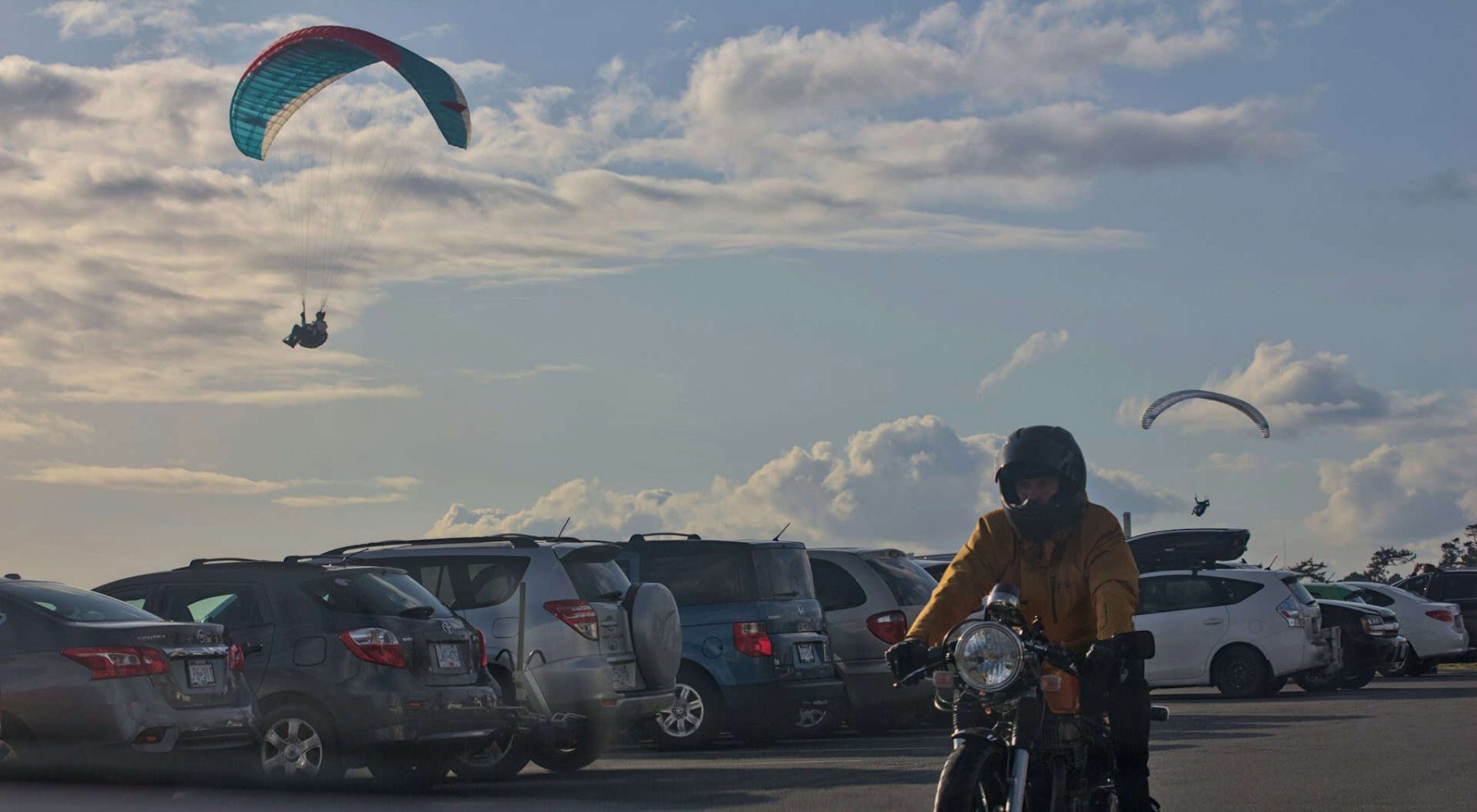
Photo by Logan Kuzyk on Unsplash
Using in‑ear headphones or earbuds, however, is more likely to get you in trouble. Since they seal off your ears entirely, they can be considered a distraction and could fall afoul of provincial distracted driving rules. Helmet speaker kits don’t fully seal to your ears, which is why they usually avoid these restrictions.
If helmet speakers aren’t allowed where you’re riding (or you’re unsure about the rules in your province) you can always mount a compact speaker system directly on your bike instead.
How do you connect speakers to a motorcycle helmet?
Most helmet speakers install easily using the Velcro pads included in the kit. Every set we’ve tested comes with both sides of the Velcro you’ll need.
Start by sticking one side inside your helmet, in the recessed areas positioned over your ears. Next, attach the matching Velcro on the back of each speaker and press them into place.
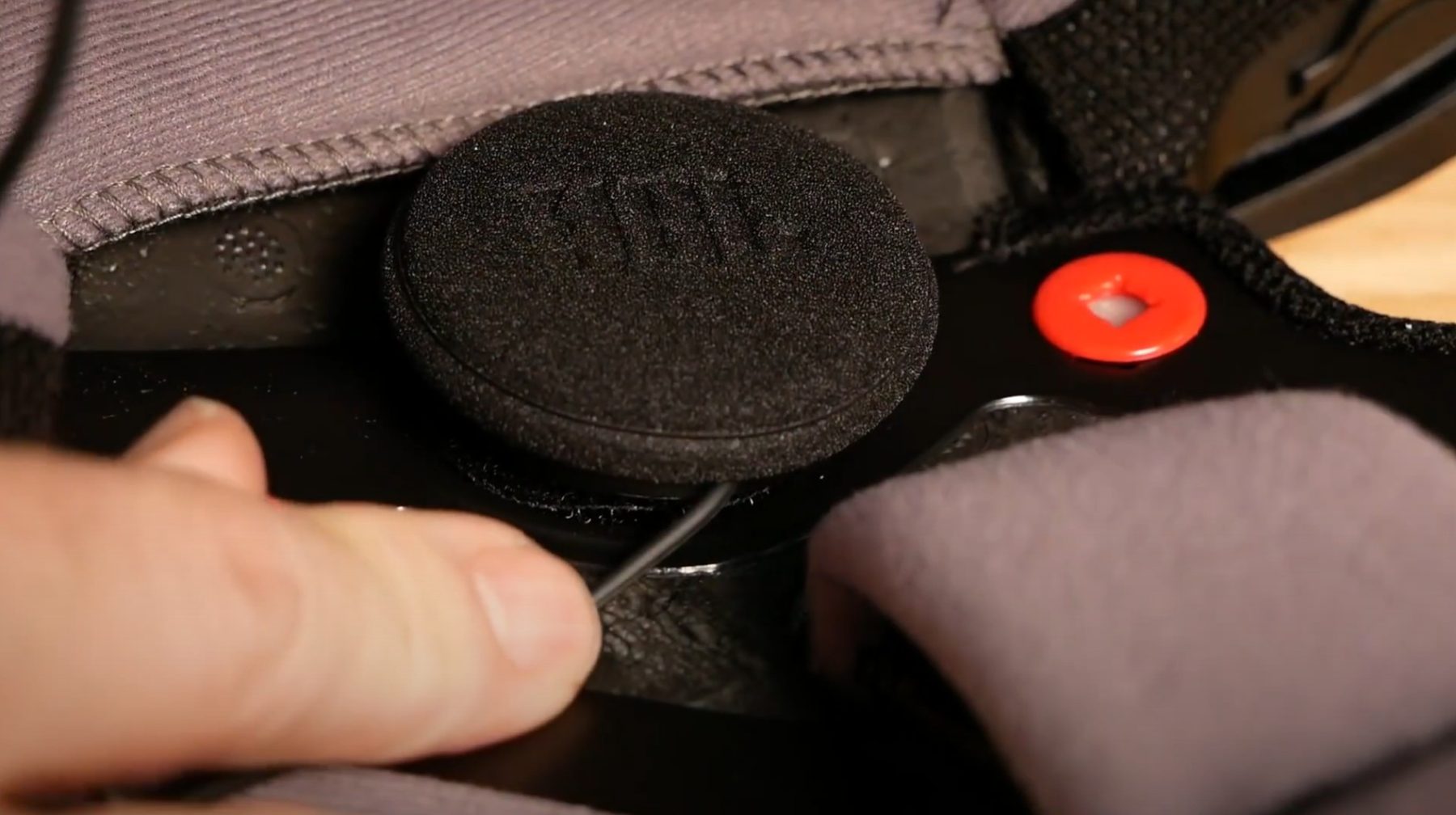
Tech4u
Make sure the left speaker is on the left side and the right is on the right. Adjust their placement so they sit directly over your ears when the helmet is on for the best sound quality.
That’s all it takes, you’ve got a built‑in sound system in your helmet.
Here’s a bonus tip: many newer Bluetooth communicators and helmet cameras let you record your intercom conversations along with your ride footage, so you can replay the chatter later.
What’s the best motorcycle helmet with built-in Bluetooth speakers?
For 2025, a top pick for Canadian riders is the Sena Impulse. This premium full‑face touring helmet comes with Sena’s latest Bluetooth 5.0 and Mesh Intercom 2.0 tech fully integrated into the shell, so there’s no need for clip‑on units or messy wires.
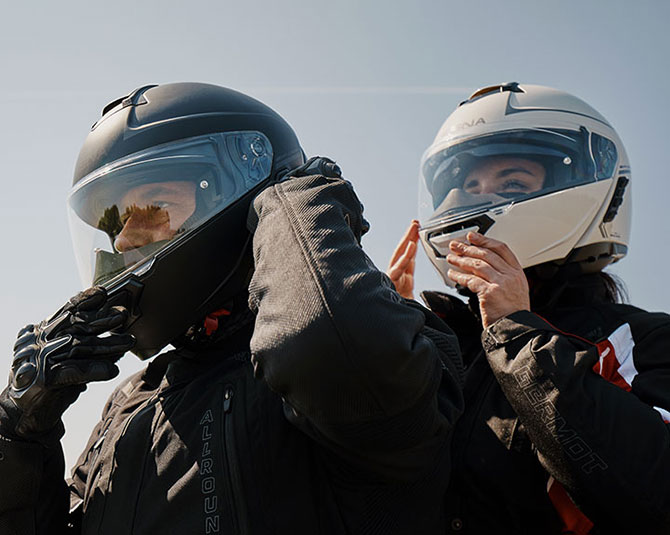
Source
It’s fitted with 40 mm Harman Kardon‑tuned speakers that deliver rich bass and clear mids, along with an advanced noise control system to keep your music, intercom, and GPS prompts crisp even on windy prairie highways or downtown streets. The Impulse also offers a bright, built‑in rear light for visibility and up to 18 hours of battery life per charge, making it a solid choice for long hauls.
The Sena Impulse is a DOT-certified modular smart helmet featuring integrated Mesh and Bluetooth intercom systems, premium Harman Kardon audio, and advanced safety features like an LED taillight.
- Integrated Bluetooth 5.0 and Mesh Intercom 2.0 for seamless rider communication
- Premium Harman Kardon audio with active noise control
- Built‑in rear light and long‑lasting battery (up to 18 hours per charge)
- Pinlock anti‑fog insert sold separately
How can I improve my helmet speakers?
Most Bluetooth intercoms come with stock speakers that sound pretty weak. Swapping them for a set from iASUS or the Cardo + JBL 45 mm kit will instantly step up your audio, giving you richer bass and clearer highs.
Installation is simple: unplug the factory set and connect the new ones. Most use standard 3.5 mm jacks, so it’s basically plug and play.
Just need more volume? A portable 3.5 mm amplifier like the Neoteck HiFi Headphone Amp can boost your existing setup without replacing your speakers.
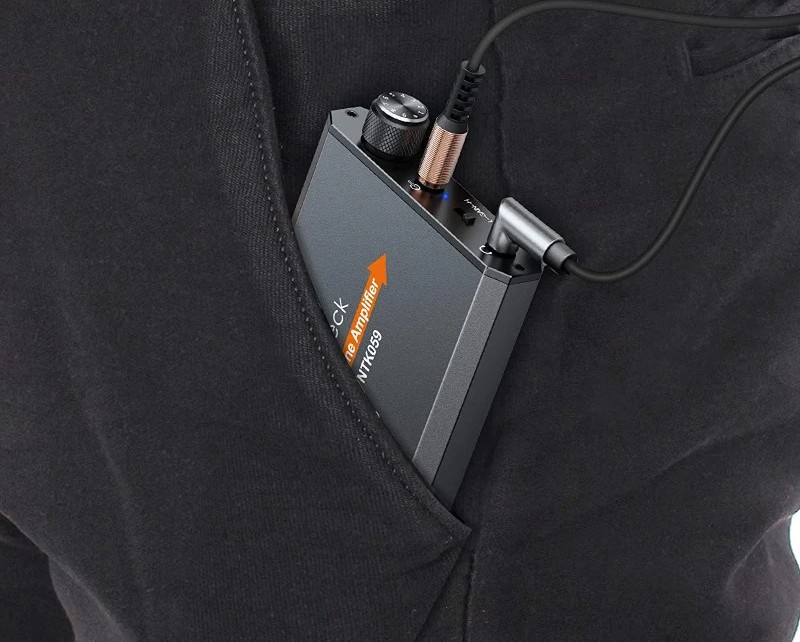
Source
Bose motorcycle helmet speakers – are they any good?
Bose doesn’t make helmet‑specific speakers, so there’s no official option for riders. If you want near‑Bose audio quality inside your lid, the Cardo 45 mm JBL kit is about as close as it gets, with clean treble and deep bass that stay clear even at highway speeds.The truth is, Bose gear is built for quiet environments — think first‑class flights to Vancouver with Mozart in your ears — not for battling headwinds and engine noise at 110 km/h. For riders in Canada, brands like JBL and iASUS design speakers tough enough to handle the noise and conditions you’ll face on the road.
Related
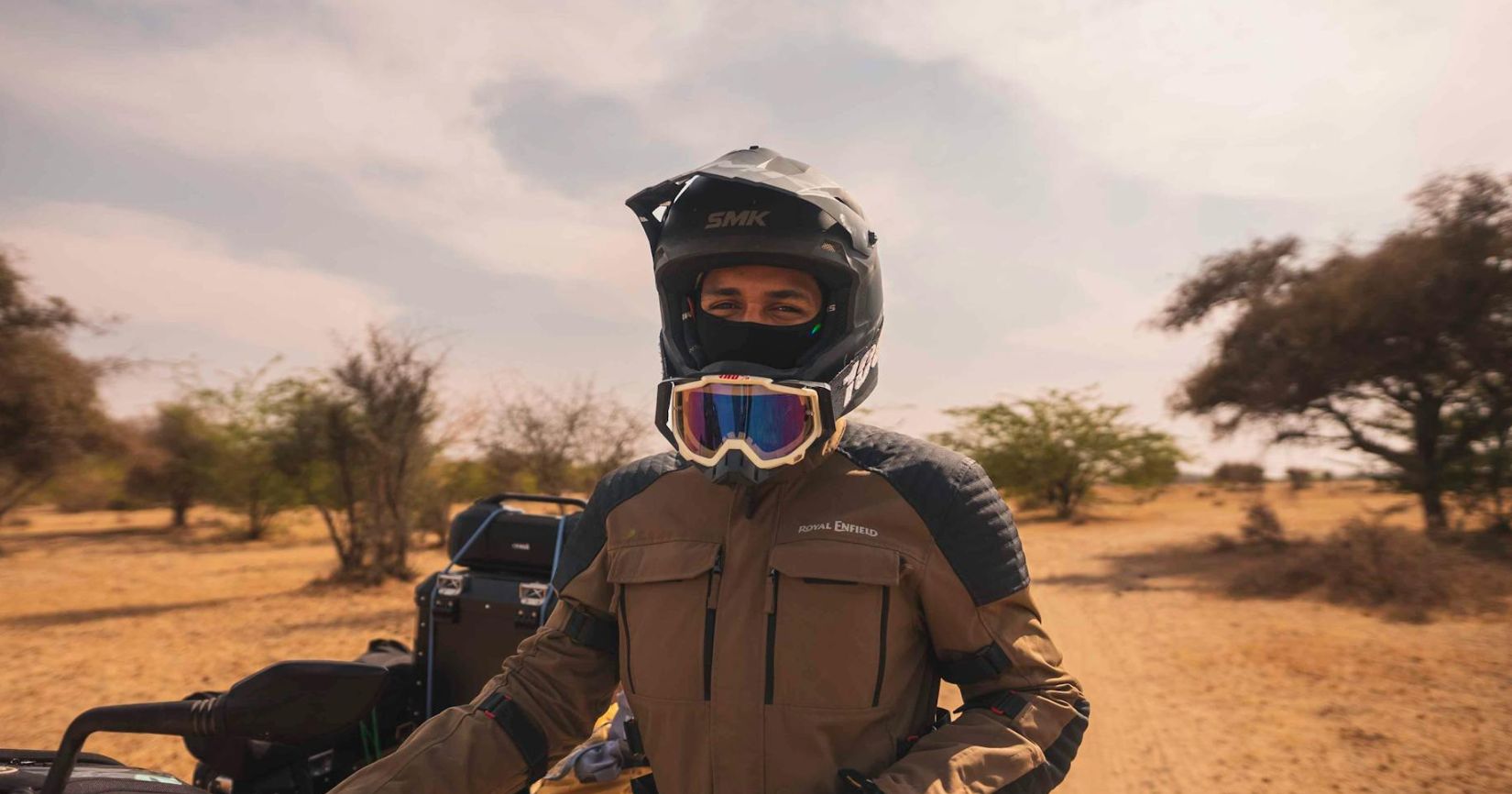
Best Motorcycle Helmet Speakers in Australia (2025)
Ride Australia’s open roads with helmet speakers designed for bass, clarity, and comfort, even in summer heat and high-speed winds.










